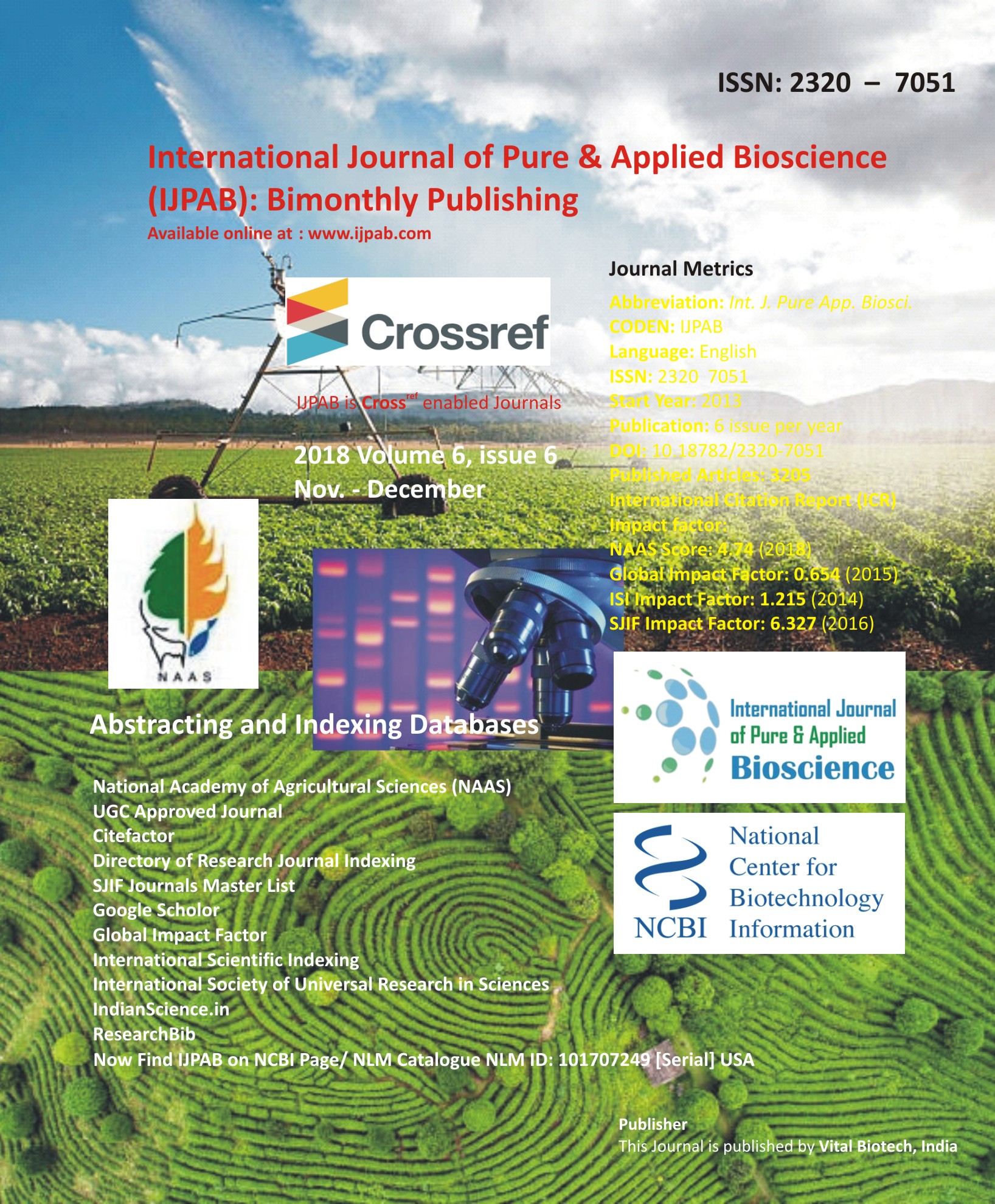
-
No. 772, Basant Vihar, Kota
Rajasthan-324009 India
-
Call Us On
+91 9784677044
-
Mail Us @
editor@ijpab.com
International Journal of Pure & Applied Bioscience (IJPAB)
Year : 2018, Volume : 6, Issue : 6
First page : (924) Last page : (930)
Article doi: : http://dx.doi.org/10.18782/2320-7051.7160
Molecular Detection and Characterization of Canine Babesia Spp. from South India
Mullur Prabhuswamy Roopesh, Eugene Placid D’souza and Gotakanapura Sanjeevamurthy Mamatha*
Department of Veterinary Parasitology, Karnataka Veterinary, Animal and Fisheries Sciences University (Regional Campus), Veterinary College, Hebbal, Bengaluru-560 024. India
*Corresponding Author E-mail: drmamathags@gmail.com
Received: 15.10.2018 | Revised: 23.11.2018 | Accepted: 1.12.2018
ABSTRACT
The molecular detection and characterization of canine Babesia spp. was carried out by polymerase chain reaction (PCR) by targeting 18S rRNA and ITS1 gene from Bengaluru district, Karnataka state (South India). Out of 110 blood samples collected from both apparently healthy and clinically suspected dogs, 76 (69.09%) samples showed amplification of 410 bp DNA fragment specific for genus Babesia. In species specific PCR, out of 76 genus positive samples 22 (28.94%) and 39 (51.31%) samples showed amplification of 590 and 671 bp DNA fragments specific for Babesia canis vogeli and Babesia gibsoni, respectively. The mixed infections of B. c. vogeli and B. gibsoni were detected in 15 (19.73%) samples by species specific PCR. Hence, the present study indicated that PCR is highly specific and useful method for detection, characterization and clinical diagnosis of Babesia spp. upto the species level.
Key words: Canine Babesia, Molecular detection, Phylogenetic analysis
Full Text : PDF; Journal doi : http://dx.doi.org/10.18782
Cite this article: Roopesh, M.P., D’souza, E.P. and Mamatha, G.S., Molecular Detection and Characterization of Canine Babesia Spp. from South India, Int. J. Pure App. Biosci.6(6): 924-930 (2018). doi: http://dx.doi.org/10.18782/2320-7051.7160

